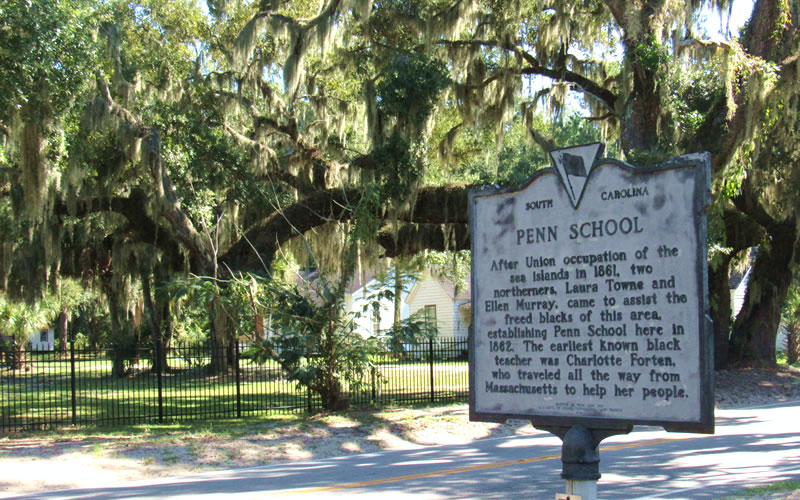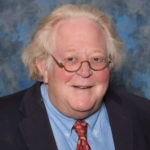By Andy Brack, editor and publisher | Sandwiched between the Southern stains of slavery and oppressive Jim Crow laws were a few years of mostly forgotten history, the Reconstruction era.
 In the months ahead, the Beaufort area is poised to become the nation’s hub for rediscovering and understanding the promise of Reconstruction to newly-freed slaves as they started to engage in America by voting, buying land and living in freedom.
In the months ahead, the Beaufort area is poised to become the nation’s hub for rediscovering and understanding the promise of Reconstruction to newly-freed slaves as they started to engage in America by voting, buying land and living in freedom.
A recently-passed massive public lands bill that pumps millions of dollars into land and water conservation projects across the nation will have a transformational impact on Beaufort and the state: It will give South Carolina its second national park, the Reconstruction Era National Park. The bill is awaiting a presidential signature.
Hundreds of thousands of Americans annually will visit the new park as well as Beaufort, Port Royal and St. Helena Island to witness what some call the nation’s second founding as formerly enslaved African Americans became citizens. The park, named a national monument just two years ago as President Barack Obama left office, will fuel economic growth in the region as visitors explore what Reconstruction actually meant mostly in the days after the Civil War.
Beaufort Mayor Billy Keyserling, central champion of efforts to establish the national park, says Beaufort is recognized as the best place to share the full story of Reconstruction because it started earlier – in 1861 when white planters abandoned St. Helena Island after Union forces captured the area – and ended later than other parts of the country.
“One hundred and fifty years have gone by and no one has talked about a period of history where people were freed from enslavement, granted birthright citizenship and given the right to vote,” he said in an exclusive interview about changes coming to the region.
“Historians with the National Park Service found that Beaufort had the most complete story [about Reconstruction] because buildings were not burned, people were not killed, the white planters abandoned the land and there was a vacuum of power” filled by newly-free black Americans governing and participating in democracy. Beaufort, he said, fulfilled a dream of telling the important story of Reconstruction more than any other place.
That’s relevant today because the three constitutional amendments passed after the Civil War – the 13th, 14th and 15th – continue to be part of the national debate. The 13th Amendment abolished slavery, a shameful part of the past that still muddies the current political and social climate of the South. The 14th Amendment established birthright citizenship, which has been challenged by the political right in debates about immigration. The 15th Amendment originally gave African American men the right to vote, a right under assault still by those who want to make it harder, not easier, for some Americans to vote.
The Beaufort park’s embrace of Reconstruction history will add context and help many Americans better understand the freedoms they have.

Pictured above is a hand-colored 1863 image (Frank Leslie’s illustrated newspaper) of the Emancipation Day celebration on Jan. 1, 1863, under a grove of oaks outside Camp Saxton along the Beaufort River. Columbia filmmaker and Charleston native Bud Ferillo, who provided the engraved image, tells us that celebration of the first Emancipation Day was the largest in the South of freedmen when sine 3,000 people attended. Today, the location is home to Naval Hospital Beaufort.
The new Reconstruction Era National Park will be anchored by four areas but will include 100 sites around Beaufort County. Anchor sites include the Brick Church, a church built by slaves, abandoned by planters and kept going by freed blacks. Then there’s the Penn Center, first a school for freed blacks that today continues as a community connector. Also important are the old firehouse on Scott Street in Beaufort, which will serve as the park’s visitor’s center, and the site of the former Camp Saxton, now the naval hospital. It’s where the largest single group of freed slaves gathered in 1863 for a reading of the Emancipation Proclamation.
“History helps unlock the unknown for many people’s sources for racial animosity that we now are living with it unnecessarily,” said Columbia leader Bud Ferillo, who has worked with Keyserling to move the park forward.
In the months ahead, Beaufort will change and help provide a better understanding of American history. To keep its community integrity, it will need to learn over-development lessons from places like Williamsburg and Charleston.
“We’re out looking for money to make Beaufort the center of education to tell the untold stories and correct the mistold stories of a period of history that essentially very few people have even heard about,” Keyserling said.
- To learn more about Beaufort’s crucial role in history and to keep up with developments, go to: ReconstructionBeaufort.org.
EDITOR’S NOTE: We learned Friday after this column originally was published that U.S. Rep. Jim Clyburn, D-S.C., a key player in pushing through federal legislation for the park, will have a press conference 11 a.m. today at Zion Baptist Church in Columbia to talk about the new park and its enabling legislation.
- Have a comment? Send to: editor@charlestoncurrents.com





 We Can Do Better, South Carolina!
We Can Do Better, South Carolina!
























